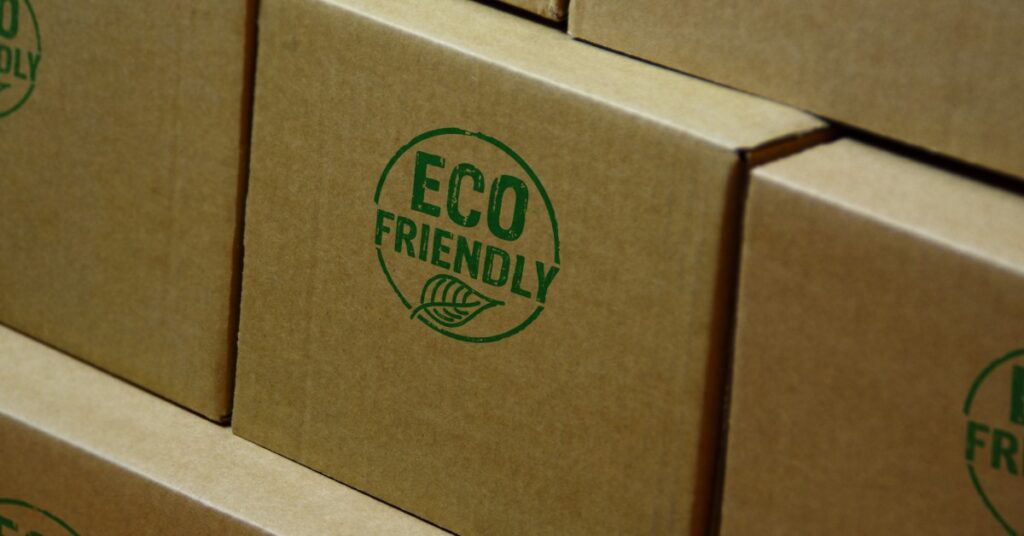The printing industry faces environmental challenges that demand urgent attention. With increasing global awareness of these challenges, sustainable practices have become essential for maintaining industry viability. By adopting innovative strategies, this sector can reduce its ecological footprint while enhancing operational efficiency. Let’s explore seven ways the printing industry can improve sustainability.
Use Sustainable Materials
Using sustainable materials reduces environmental impact. Transitioning to eco-friendly inks like soy-based, water-based, and UV inks benefits both the environment and production quality. These inks are derived from renewable resources, which means they emit fewer volatile organic compounds (VOCs) and contribute less pollution.
Additionally, incorporating recycled and responsibly sourced paper reduces deforestation and waste. By choosing paper products that carry certification labels like FSC (Forest Stewardship Council) and SFI (Sustainable Forestry Initiative), companies adhere to environmental standards. These certifications guarantee that the paper comes from well-managed forests, promoting biodiversity and sustainable resource use. Furthermore, opting for recycled paper decreases the need for raw materials and reduces the carbon footprint of paper production.
More Solutions
Biodegradable substrates break down more easily after use, reducing landfill waste. This means that recyclable packaging supports waste reduction while also encouraging a circular economy where materials continuously cycle through production and consumption.
Moreover, partnerships with suppliers committed to eco-friendly practices can amplify sustainability efforts. Collaborating with eco-conscious manufacturers allows printers to access innovative materials and technologies that further reduce ecological impact.

Adopt Energy-Efficient Technologies
Modern printing presses incorporate advanced features that lower energy consumption, enabling high-quality results with reduced environmental impact. These new systems integrate automation that streamlines processes and minimizes human error, which leads to faster and more accurate production cycles. This efficiency decreases operational costs, making sustainability economically appealing for businesses.
Smart technology applications enhance energy efficiency by optimizing energy usage. These systems monitor activities and adjust processes in real time, ensuring optimal energy consumption. For example, smart sensors can detect idle machinery and power them down automatically, conserving energy without disrupting production.
Adopting energy-efficient technologies offers benefits beyond sustainability. By reducing energy consumption and leveraging renewable resources, companies boost their corporate image and attract environmentally conscious consumers. This positive brand perception fosters increased customer loyalty and opens new market opportunities. As the industry continues to innovate, embracing energy-efficient technologies sets a strong precedent for others to follow, showcasing a commitment to environmental stewardship and operational excellence. This transformative shift positions the printing industry as a leader in sustainable business practices.
Embrace Solvent Recycling
Embracing solvent recycling is another way the printing industry can improve sustainability. Companies use solvents in various printing processes, which can cause pollution without proper management. Recycling these materials supports sustainability and provides financial benefits. By integrating a solvent recycler into their operations, businesses find an effective solution that fits seamlessly without disruption.
For instance, a mid-sized printing company aiming to reduce waste and cut costs can incorporate a 30-gallon solvent recycler into their daily routine. They can collect used solvents from their printing presses and transfer them to the recycler. The machine’s advanced filtration system then purifies the solvents, removing impurities and contaminants. After purification, the company can return the clean solvents to the production line for reuse.
This practice reduces the demand for new solvent purchases, slashing raw material costs. By minimizing the volume of waste solvents that require disposal, the company can lower its hazardous waste management expenses.
Follow Waste Reduction Strategies
The printing industry can adopt various waste reduction strategies to lower environmental impact and boost efficiency. These approaches align with eco-friendly goals and enhance operational performance. Here are some key strategies to consider:
Embrace Digital Proofs
Companies can transition from traditional to digital proofs to cut down on paper usage while maintaining high-quality standards. Using digital proofs eliminates the need for physical copies during the review process, speeding up workflows and reducing waste.
Implement On-Demand Printing
Businesses can align production with actual demand through on-demand printing, decreasing the risk of overproduction and excess inventory. Adopting this strategy lets companies respond swiftly to market changes and customer preferences without accumulating unnecessary stock.
Optimize Inventory Management
Businesses can prevent overordering and material obsolescence by accurately forecasting demand and maintaining precise inventory levels. Leveraging technology for real-time tracking and analysis refines inventory practices, reducing surplus and waste.
Adopt Closed-Loop Systems
Businesses can enhance waste management by following closed-loop systems and reusing materials within production cycles. These systems facilitate the continuous recycling of resources, such as paper scraps and ink residues, back into the manufacturing process.
Practice Water Conservation
Water conservation is essential for boosting sustainability in printing operations, as the industry uses water for ink mixing, plate cleaning, and cooling systems. Many companies now utilize water-efficient printing technologies and alternative cleaning methods that reduce consumption without compromising quality to address high water usage. For example, printing firms may switch to waterless printing techniques, which eliminate the need for water in the printing process altogether. This innovative approach conserves water and reduces the chemical waste of traditional printing.
Another practice gaining traction involves the use of advanced cleaning technologies that require minimal water, focusing instead on high-efficiency filtration systems to clean inks and plates effectively. These efforts help companies achieve their sustainability targets and lead to cost savings by reducing water consumption and wastewater treatment expenses.
Prioritize Industry Collaboration
Industry collaboration and innovation propel sustainability advancements in the printing sector. By forming strategic partnerships among manufacturers, suppliers, and printers, the industry can share best practices and drive innovations that enhance environmental responsibility. For instance, a collaboration between a major ink supplier and a leading printing company can lead to the development of eco-friendly inks, reducing harmful emissions during the printing process. These alliances allow companies to pool their resources and expertise, accelerating the implementation of sustainable technologies and practices.
Through these collective efforts, the industry elevates individual company performance and raises overall standards. This unified approach fosters a culture of continuous improvement, encouraging more companies to engage in sustainable practices. By embracing collaboration, the printing industry paves the way for unified progress toward a greener, more sustainable future.

Educate and Train the Workforce
Educating the workforce on sustainability practices transforms company culture, embedding a strong sense of environmental responsibility within the printing industry. Companies can drive meaningful progress across the industry by equipping their employees with the knowledge and tools necessary to implement sustainable practices.
For example, in-house sustainability training programs can cover topics such as efficient resource use, waste reduction techniques, and the importance of eco-friendly materials. These programs empower employees to make informed decisions in their daily operations, leading to a measurable decrease in energy consumption and waste.
Final Thoughts
By embracing sustainability, the printing industry can create lasting environmental benefits and meet evolving consumer expectations. A steadfast commitment to sustainable practices drives innovation and operational excellence, ensuring future success.

